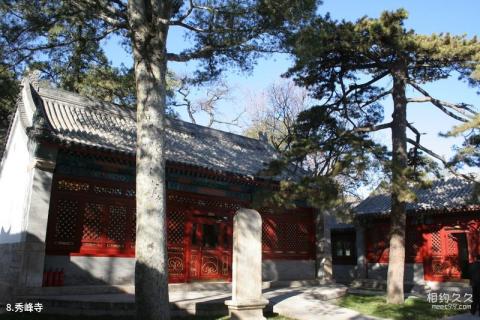
Introduction to Xiufeng Temple: It was built from the eighth year of Xuande (1433) to the second year of Zhengtong (1437) in the Ming Dynasty by the eunuch Gao Gong and the abbot monk Zhishen. The emperor named Xiufeng Temple. In the late Qing Dynasty, the temple was abandoned and there was no People live in it, and the palace gradually collapses. In the early years of the Republic of China (1911), Liu Zhonglu, Bao Ruichen and others borrowed this temple and repaired it slightly to establish Hequn Society. In the spring of the fourteenth year of the Republic of China (1925), Taoist priest Wang Xiuzhen paid for the temple. In the fifteenth year (1926), he also bought the mountain farm outside the temple, and then renamed the temple Xiuzhenguan. In the seventeenth year (1928), Zhang Yigong died and the Taoist cultivator left. So Lin Xinggui, who used Xiufeng Mountain as his villa, bought the temple and mountain farm, abolished the name of the temple and changed it into a temple. In 1937, the "July 7" Marco Polo Bridge Incident broke out, and Xiufeng Temple and the seismic observatory became the outpost base of the guerrillas. In 1944, the Pingxi Information Station was established in Xiufeng Temple, headed by Liang Bo. In 1945, a news newspaper was founded in Xiufeng Temple, which published about 30 issues in three months. The president was Zhao Fan.
After the victory of the Anti-Japanese War, a French doctor named Pei had a daughter suffering from lung disease and his Chinese wife was weak. He built the Pei Family Garden at the northern foot of Yangtai Mountain for his wife and daughter to recuperate. At that time, there were puppet army activities in Bei'anhe Village and Dajue Temple. In order to cover the activities of the Pingxi Intelligence Station, the French flag was hung until the last activity of the intelligence station.
